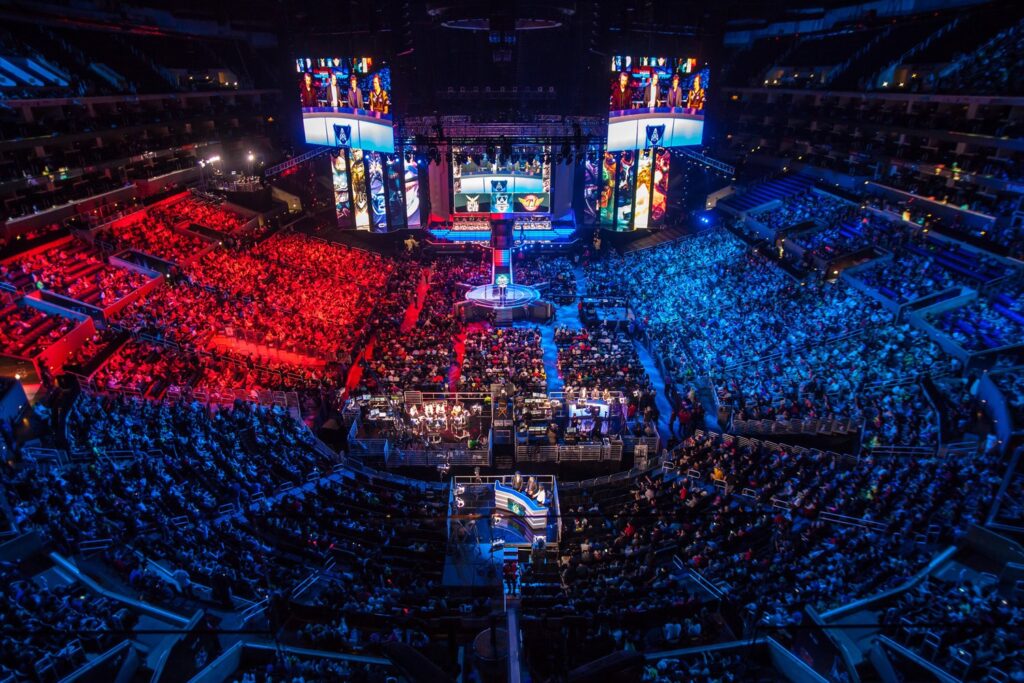
The Rise of Esports and Competitive Gaming
The history of esports is a fascinating journey that dates back to the early days of video games. Today, competitive gaming has evolved into a billion-dollar industry with global tournaments, dedicated fan bases, and professional players. While many think of esports as a recent trend, its roots go back to the 1970s when the first gaming competitions took place.
Over the decades, gaming has grown from arcade challenges to professional leagues with multimillion-dollar prize pools. From early console tournaments to online battles that attract millions of viewers, esports has transformed the way people experience competitive entertainment.
The Early Days: Esports in the 1970s and 1980s
The first recorded video game competition took place at Stanford University in 1972. Students gathered to play Spacewar, one of the earliest computer games. The winner received a one-year subscription to Rolling Stone magazine, marking one of the earliest examples of competitive gaming.
As video games gained popularity, the competitive scene expanded. The 1980 Space Invaders Championship, hosted by Atari, attracted over 10,000 participants. This event demonstrated the potential of video game tournaments and set the stage for organized competitions.
During this time, Twin Galaxies was founded by Walter Day to keep track of high scores across arcade games. The organization became a respected record-keeping authority and played a role in establishing gaming as a serious competitive activity.
A Setback and a Revival: The Video Game Crash of 1983

The gaming industry experienced a major setback in 1983 due to an oversaturation of low-quality games. Revenue dropped, and consumer interest declined. Some critics even claimed video games were a passing trend.
However, the launch of the Nintendo Entertainment System (NES) in 1985 helped revive the industry. Nintendo played a significant role in competitive gaming by organizing events like the Nintendo World Championships in 1990 and 1994. These tournaments attracted players from across the United States and showcased the growing potential of video game competitions.
The Internet Sparks a Gaming Revolution in the 1990s

The rise of the internet in the 1990s revolutionized esports. Online connectivity allowed players to compete against each other globally, leading to the birth of modern multiplayer gaming. Titles like Doom and Quake paved the way for online esports, with Quake’s Red Annihilation tournament in 1997 becoming one of the first major online competitions.
Over 2,000 players participated in the Red Annihilation qualifiers, with the final 16 competing in Atlanta, Georgia. The tournament winner, Dennis “Thresh” Fong, took home the grand prize—a Ferrari 328 GTS from game developer John Carmack. This event marked a turning point in esports, proving that gaming could offer real-world rewards.
As more people gained access to online gaming, titles like StarCraft and Counter-Strike gained popularity, leading to the rise of professional tournaments. South Korea, in particular, embraced esports, with the Korean Esports Association (KeSPA) helping to develop the industry into a national phenomenon.
The 2000s: Esports Enters the Mainstream
The early 2000s saw esports evolve from niche competitions to professionally organized leagues. The rise of high-speed internet and PC gaming cafes fueled competitive gaming across the globe.
Real-time strategy games like Warcraft III, StarCraft II, and Age of Empires III dominated competitive play. Meanwhile, Microsoft and Sony expanded online multiplayer gaming with Xbox Live and PlayStation Network, leading to the rise of console esports.
Major tournaments such as the World Cyber Games (WCG), Cyberathlete Professional League (CPL), and Major League Gaming (MLG) helped establish structured leagues with official rankings and significant prize pools. By the mid-2000s, some tournaments began offering $1,000,000 in prize money, drawing in more players and corporate sponsorships.
The 2010s: Esports Becomes a Global Phenomenon

By the 2010s, esports had exploded into mainstream entertainment. Streaming services like Twitch, YouTube Gaming, and Facebook Gaming allowed fans to watch tournaments live, helping esports grow into a multi-billion-dollar industry.
One of the most important games of the decade was League of Legends, which overtook DotA as the leading multiplayer online battle arena (MOBA) game. Other games in the hero shooter or battle royale genres, like Counter-Strike: Global Offensive (CS:GO), Call of Duty, and Fortnite, further solidified the esports ecosystem.
Governments and universities began recognizing esports as a legitimate industry. Players were granted athlete visas, and some universities even offered scholarships for competitive gaming, a first in the history of esports.
Battle Royale games like PUBG and Fortnite introduced new styles of competition. In 2019, the Fortnite World Cup drew over two million live viewers, offering an unprecedented $100 million prize pool—the largest in esports history at the time.
Esports Today: A Billion-Dollar Industry
Esports has continued to grow, attracting massive sponsorship deals and record-breaking audiences. Companies like Coca-Cola, Red Bull, and Nike now sponsor gaming tournaments, treating esports as a mainstream entertainment sector.
Mobile Esports
The rise of mobile esports has further expanded the industry, with games like PUBG Mobile, Free Fire, and Mobile Legends: Bang Bang dominating in India, Southeast Asia, and Latin America. These regions have seen explosive growth as smartphone gaming becomes more accessible.
AI and Technology in Esports
Advancements in AI and real-time analytics have also changed the esports landscape. AI-driven tools now help teams analyze gameplay, optimize strategies, and detect cheating, making competitions fairer and more competitive.
Esports and Real-Time Betting
Esports betting has emerged as another growing market, with platforms like GG.BET, Unikrn, and Rivalry partnering with major tournaments. In 2024, esports betting revenue surpassed $2 billion, highlighting its increasing influence on the industry.
The Future of Esports
Esports is expected to surpass $3 billion in revenue by 2025, with increased sponsorship deals, international investment, and continued audience growth. The industry has firmly established itself alongside traditional sports, drawing millions of viewers for tournaments worldwide.
As technology advances and new games emerge, esports will continue to evolve, attracting new players and expanding into new markets. Competitive gaming is no longer just a hobby—it is a global industry with a bright future.
Esports: A Competitive Revolution That’s Here to Stay
The history of esports is a testament to the evolution of competitive gaming. From the arcades of the 1970s to the global championships of today, esports has come a long way. With new innovations, growing investment, and passionate fans, the future of gaming looks brighter than ever.
